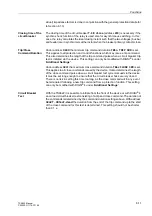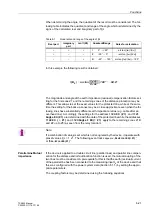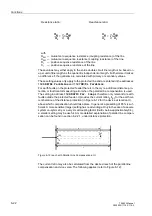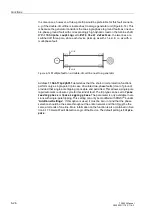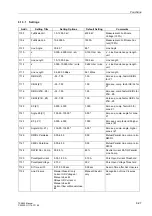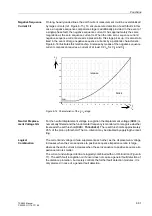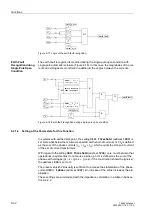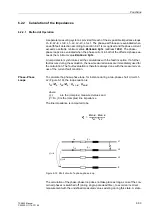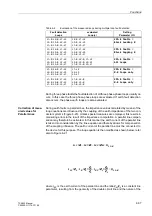
Functions
6-25
7SA522 Manual
C53000-G1176-C119-2
Address
determines which criteria allow for the reset of an
issued trip command. The setting
&XUUHQW2SHQ3ROH
ensures that the trip command
resets after the current disappears. The measured current must drop below the value
set in address
before the trip command resets (see above).
With the setting
&XUUHQW$1'&%
the circuit breaker auxiliary contact must addition-
ally indicate that the circuit breaker has opened. This setting demands that the status
of the auxiliary contacts is marshalled to a binary input.
Three-pole
Coupling
Address
determines whether each trip command resulting
from fault detection in more than one phase is three-pole, or if three-pole coupling of
the trip command only results when more than one phase is tripped. This setting is
only relevant with one- and three-pole tripping and therefore only available in this ver-
sion. Additional information can be found in Section 6.17.3 fault detection logic of the
device.
With the setting
ZLWK3,&.83
every fault detection in more than one phase leads to
three-pole coupling of the trip outputs, even if only a single-phase earth fault is situated
within the tripping region, and further faults only affect the higher zones, or are located
in the reverse direction. Even if a single-phase trip command has already been issued,
each further fault detection will lead to three-pole coupling of the trip outputs.
If, on the other hand, this address is set to
ZLWK75,3
, three-pole coupling of the trip
output (three-pole tripping) only occurs when more than one pole is
tripped
. Therefore
if a single-phase fault is located within the zone of tripping, and a further arbitrary fault
is outside the tripping zone, single-phase tripping is possible. Even a further fault dur-
ing the single-pole tripping will only cause three-pole coupling if it is located within the
tripping zone.
This parameter is only available in the single- and three-pole tripping version. It ap-
plies to all protection functions of the 7SA522, which can trip single-pole.
The difference made by this parameter becomes apparent when multiple faults are
cleared, i.e. faults occurring almost simultaneously at different locations in the net-
work.
If, as shown in the example (Figure 6-13), two single phase to ground faults occur on
different lines – in this example parallel lines – the protection relays on the two faulted
lines, at all four line ends, pick up. In this example, all four relays detect a L1-L2-E
fault, in other words a two phase to ground fault. However, each individual line is only
subjected to a single phase to ground fault. If single pole tripping and reclosure is em-
ployed, it is therefore desirable that each line only trips and recloses single pole. This
is achieved by setting
with TRIP
. In this manner each of the
four relays at the four line ends recognises that single pole tripping for the fault on the
respective line is required.
Figure 6-13
Multiple fault on a double-circuit line
L1–E
L2–E
Summary of Contents for siprotec 7SA522
Page 20: ...7SA522 Manual C53000 G1176 C119 2 ...
Page 64: ...7SA522 Manual C53000 G1176 C119 2 ...
Page 89: ...SIPROTEC 4 Devices 4 25 7SA522 Manual C53000 G1176 C119 2 Figure 4 20 CFC Logic example ...
Page 408: ...7SA522 Manual C53000 G1176 C119 2 ...
Page 456: ...7SA522 Manual C53000 G1176 C119 2 ...
Page 516: ...7SA522 Manual C53000 G1176 C119 2 ...
Page 620: ...Appendix B 48 ...

